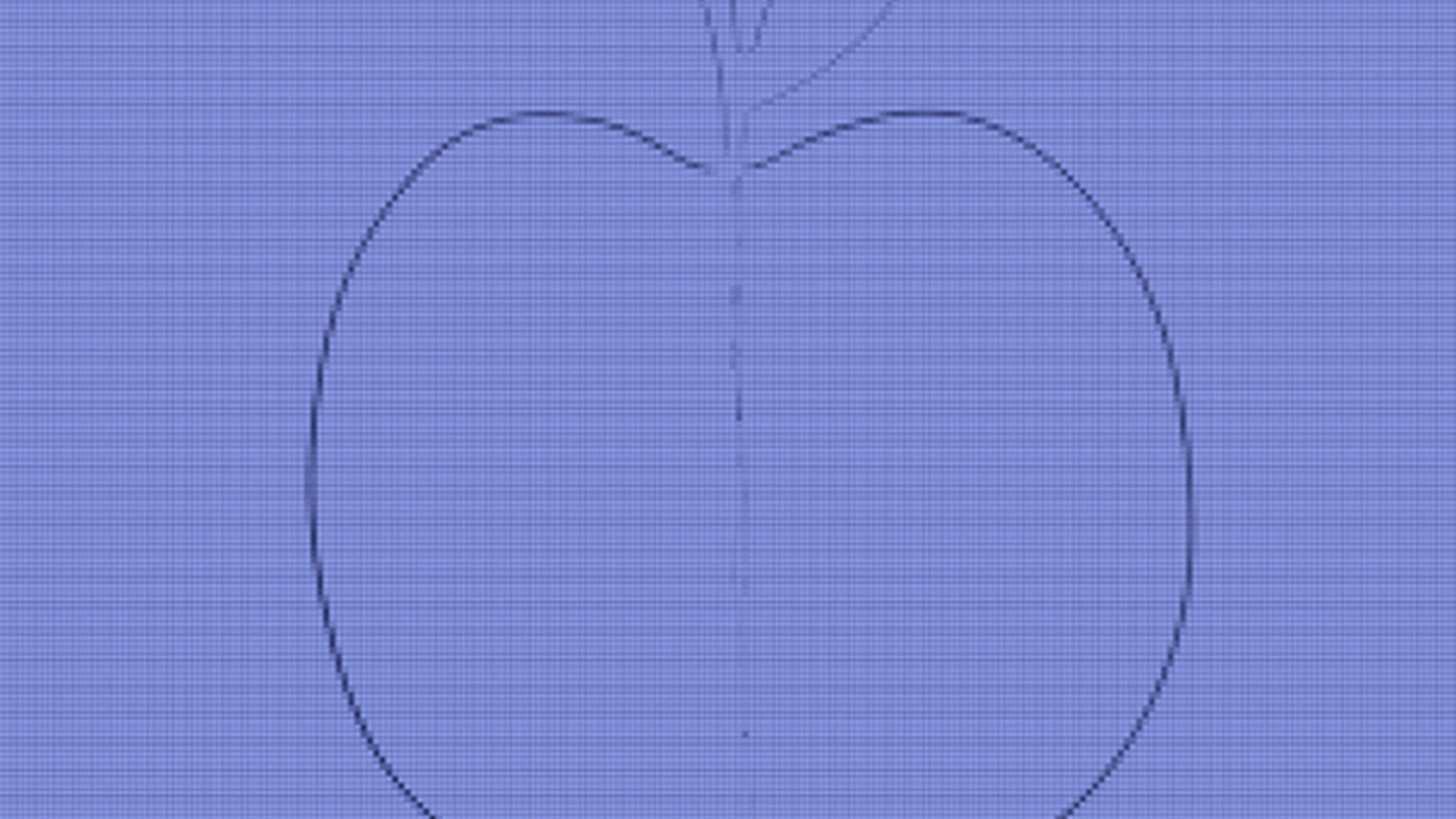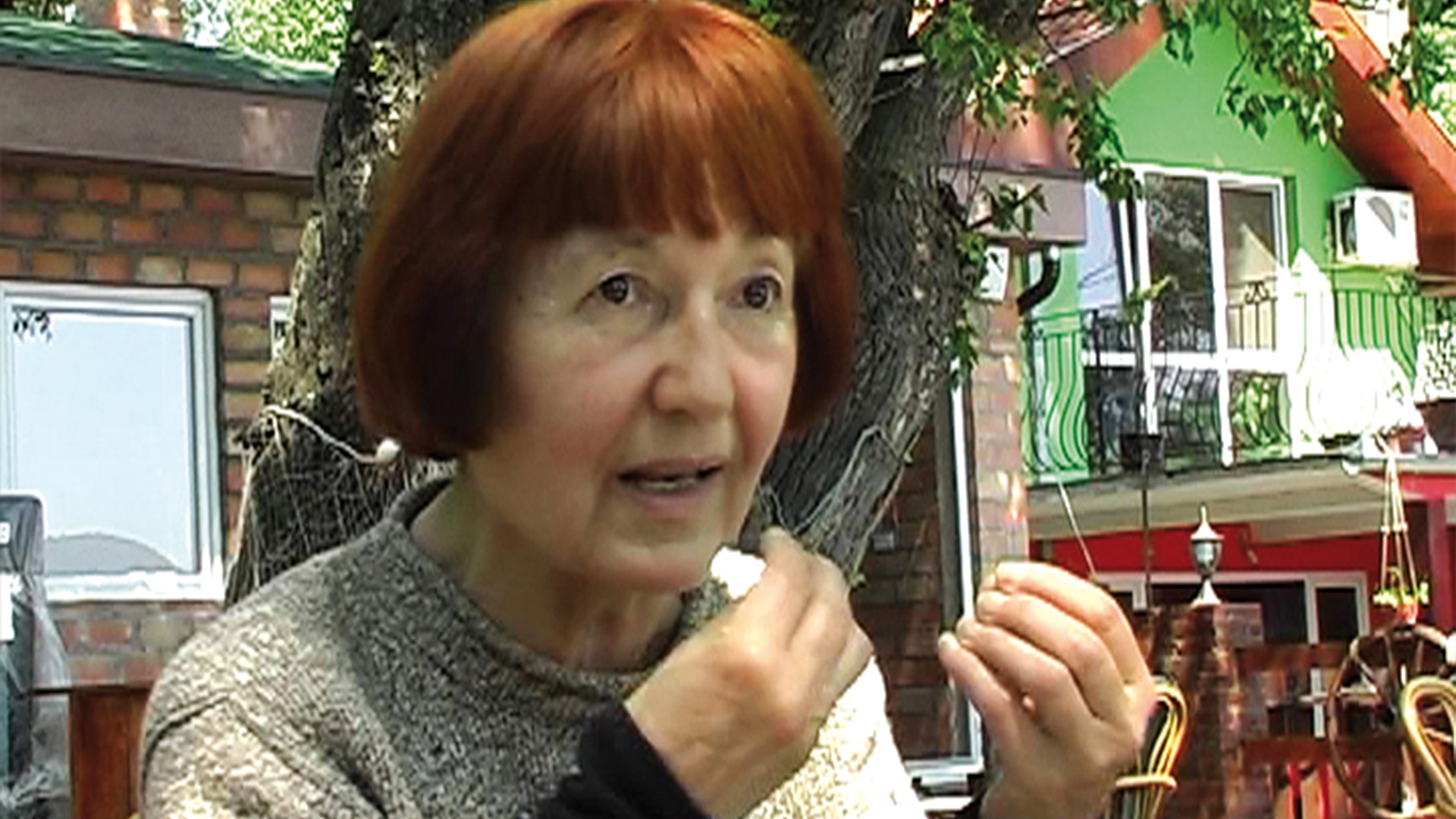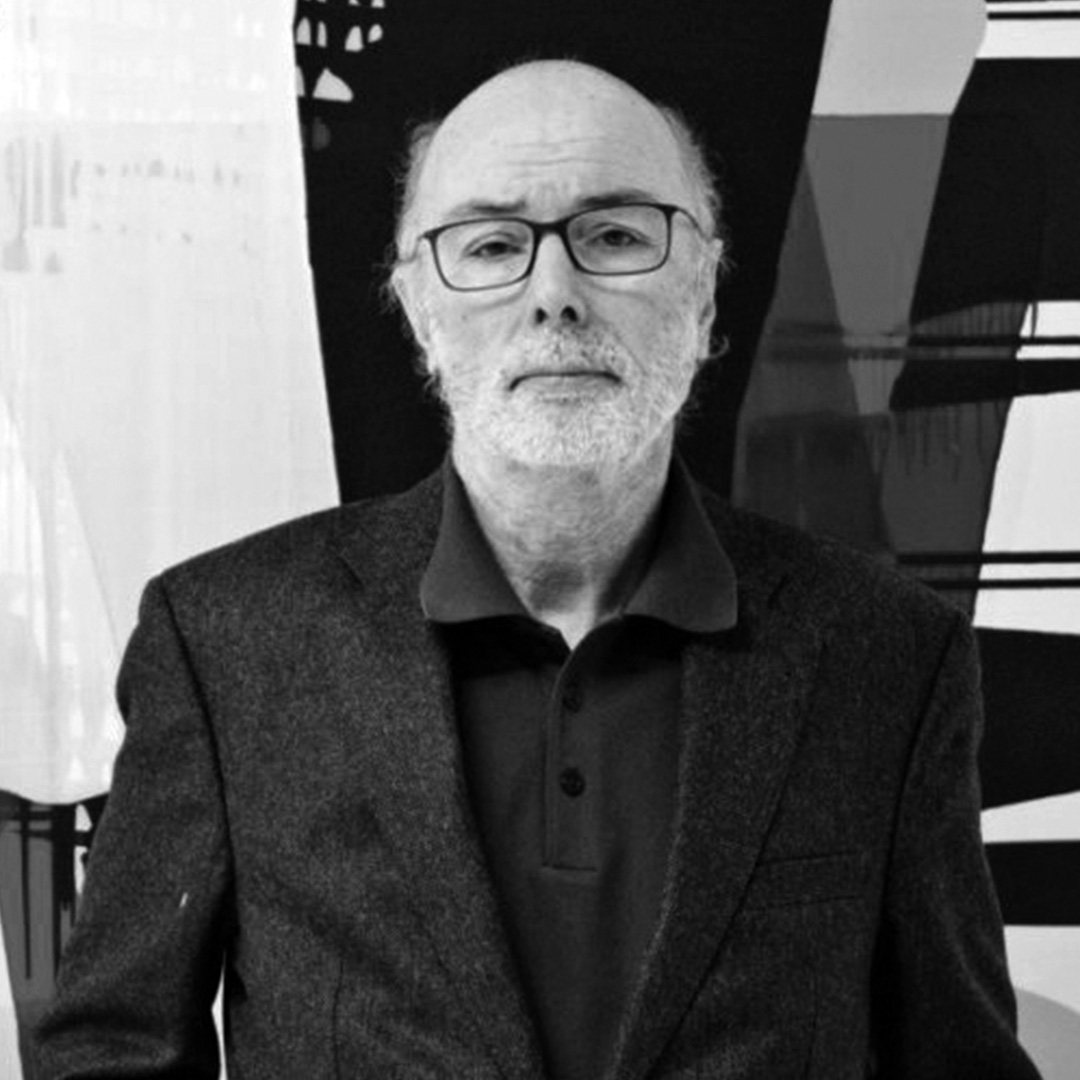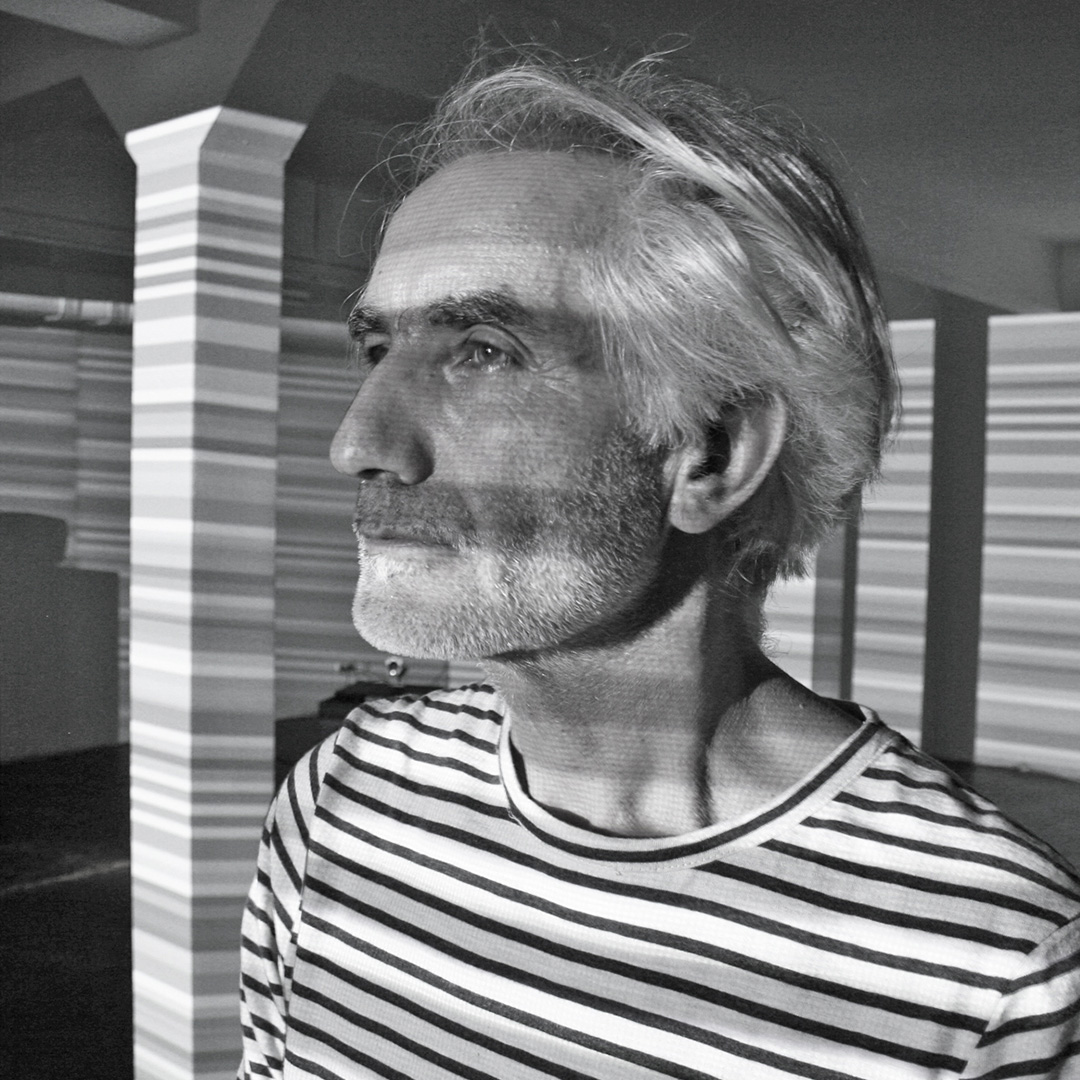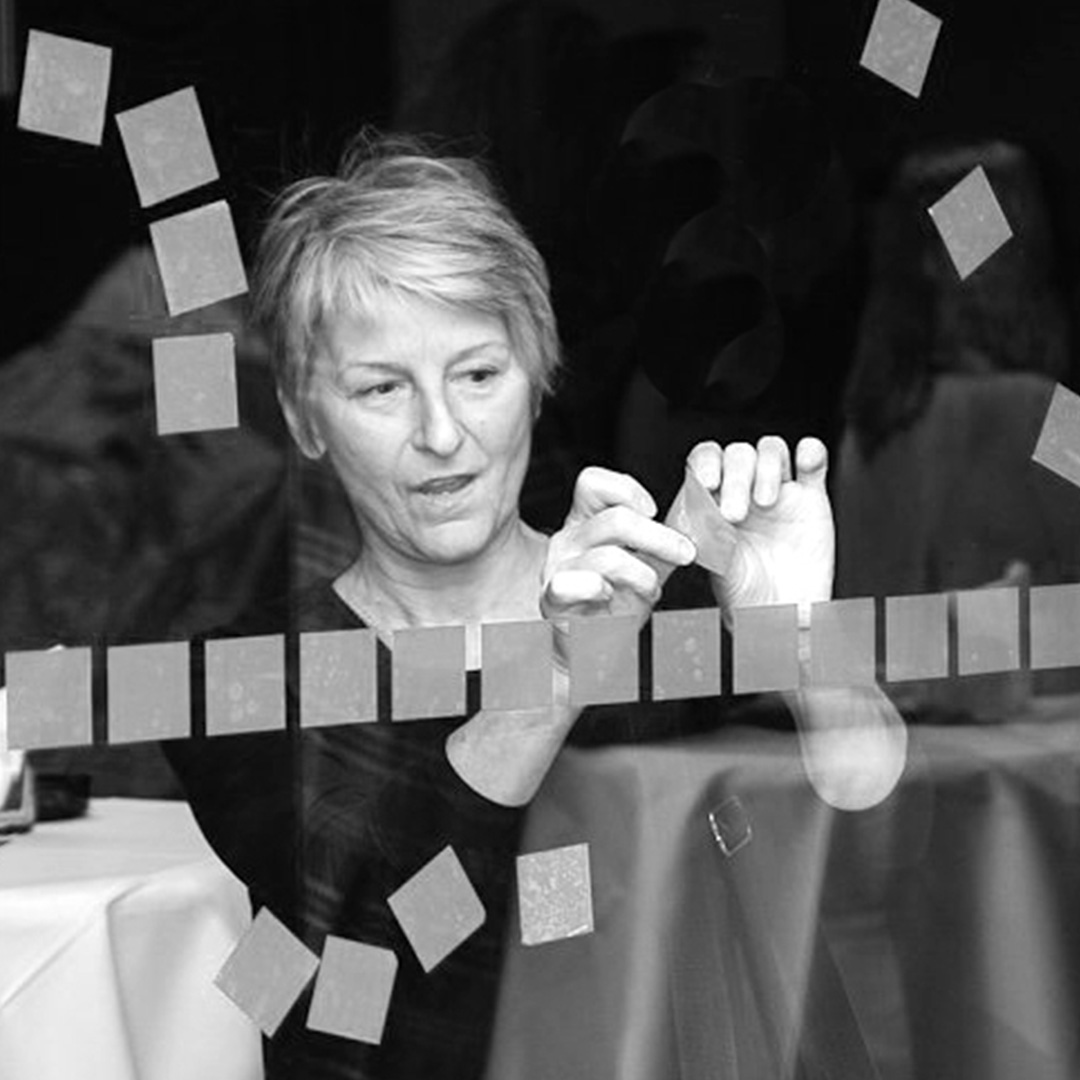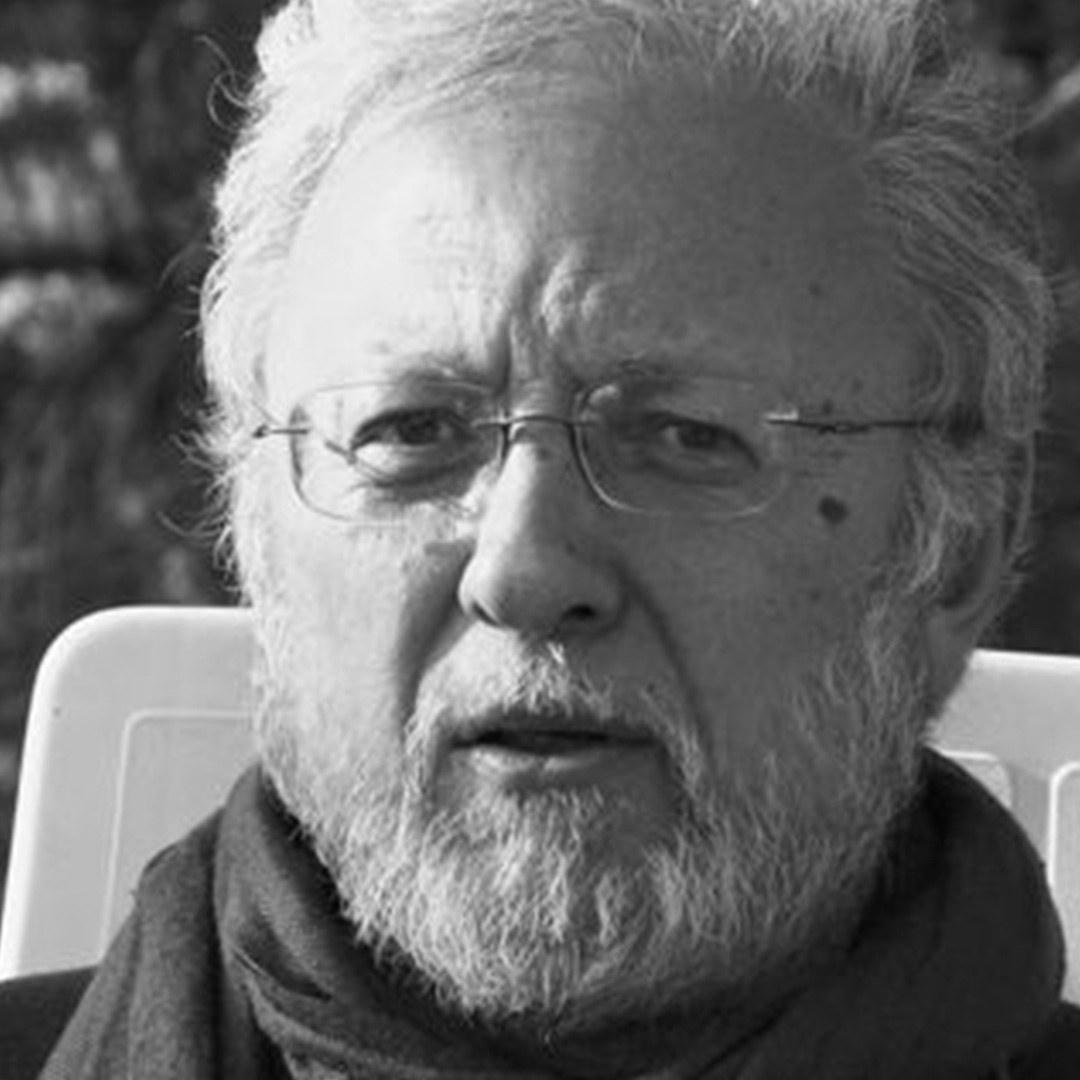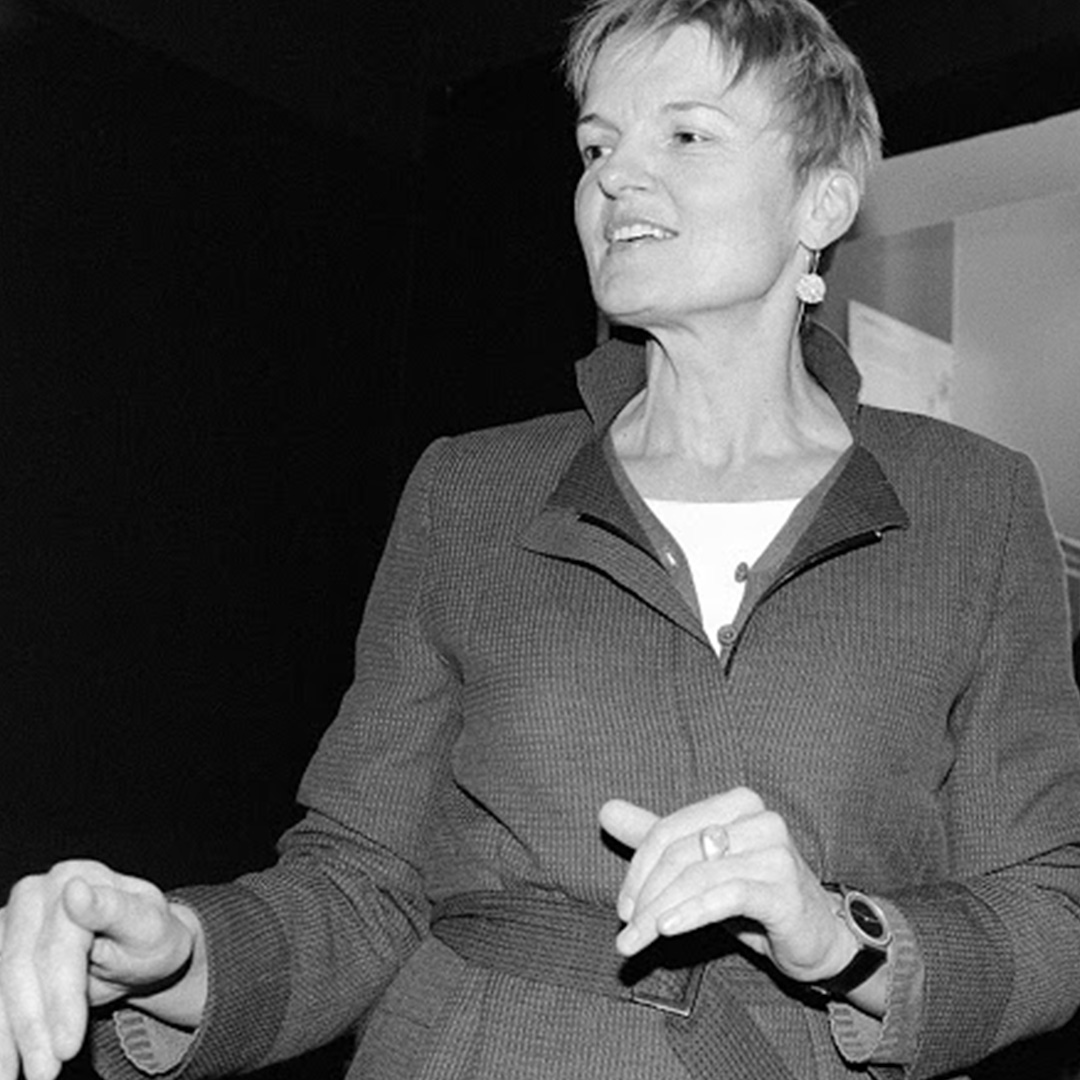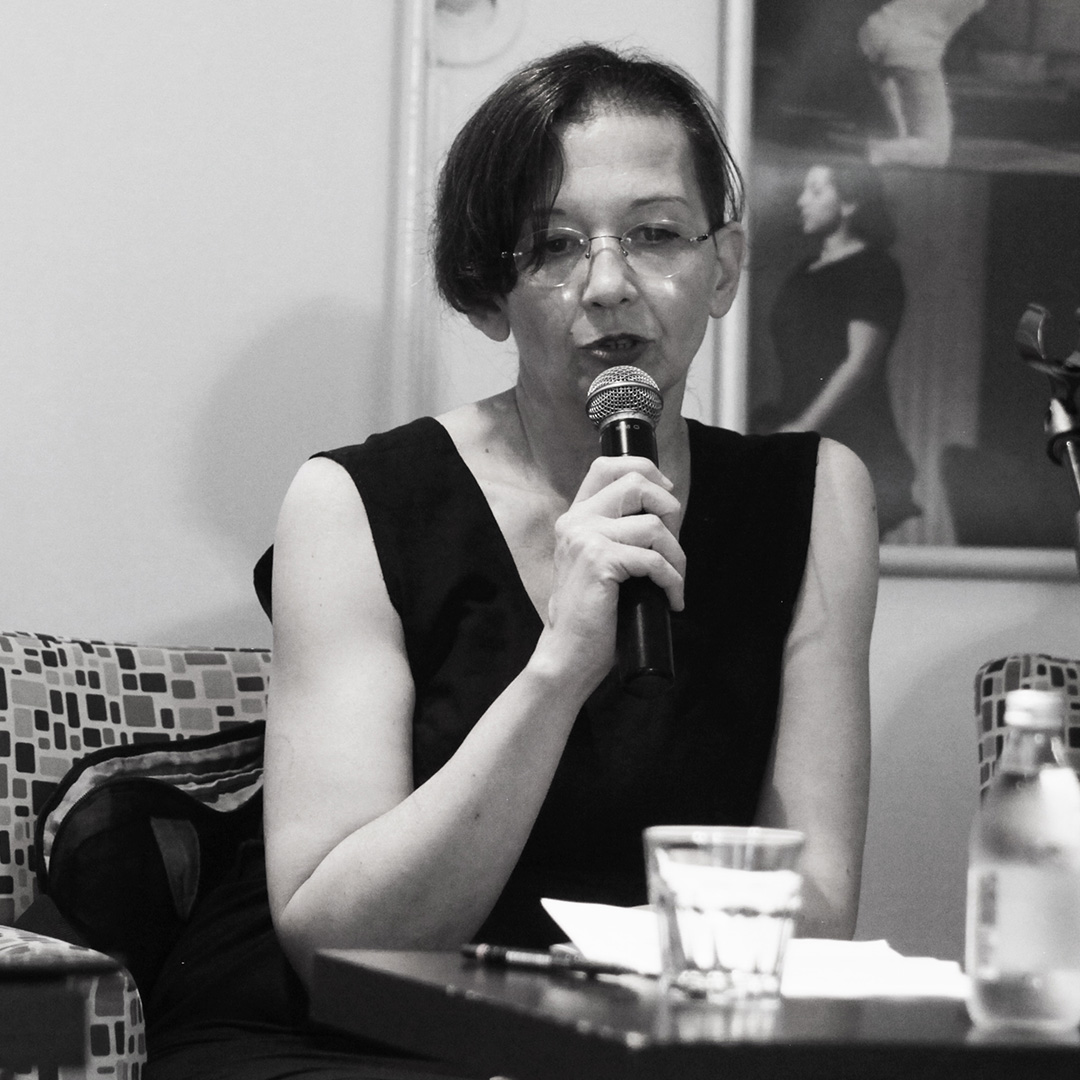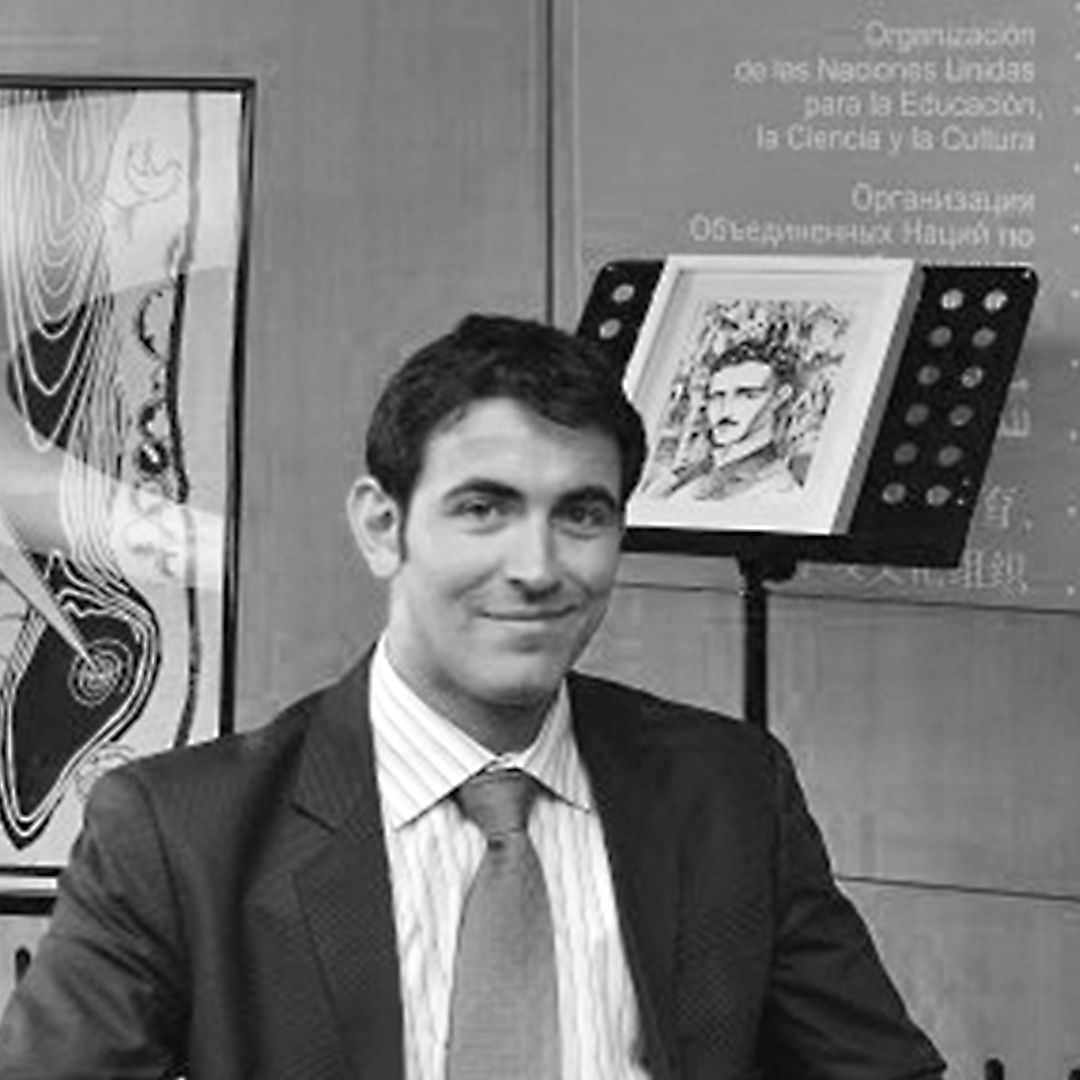Werner Jauk, 2021
Theoretical premises – in-sight from out-side & body-knowledge from being in it
The programming of the event in Belgrade has attempted to discuss Marica Radojčić’s work on Tesla as a work between science and art, a currently mostly unclear term that has also been attributed to her work. The attempt now is to narrow down a form of work between science & art in a definitional way, as it were – via their “commonalities” – “aisthesis” and its formalisation are at the centre.
Tesla and Marica Radojčić, both focus on the seeing perception. Marica Radojčić borrows the title of her work from Tesla, from the Illumination of darkness. This follows the myth of Prometheus, in general the idea of life-energy from fire, light and thus the illumination, clarification / elucidation, the mastering of life through knowledge.
For Marica Radojčić, the flashing of the Tesla coil is a metaphor for knowledge as an extension of the body in harmony with the illumination of the world; Tesla sees in the availability of energy in nature – the modern view of the world combined with humanistic thinking. From the constant availability of energy in nature, he derives the general availability of electricity in the age of electricity, a “democratic” thinking that McLUHAN similarly sees as cultural progress in the “all-at-onceness” of information of the media age (McLUHAN 1995). However, McLUHAN saw in the “all-at-onceness” of the world of networked information an auditory phenomenon of perception, selecting from the dynamics of what is present around the body according to its arousal value – according to in-tention as being in tension and not having Ab-Sicht[1].
“Aisthesis” means perception – science and art are based on perception and its formalisation.
This form of perception is dominantly committed to seeing, to making visible. Light means the extension of seeing, the making visible of the naturally invisible. Thus, at the same time the overcoming of nature: the illumination of the world, the illumination even of the “dark-side of the moon …”.
What is attempted to be “clarified” in myth, in religions, in art and science as different realities, has in Tesla a very pragmatic life side at the same time something that is incomprehensible to seeing and thus cannot be explained. It is the transmission of electric-energy within the paradigm of the enlightenment: the understanding outside of seeing through cognitions from embodiments of the mechanical body, which interacts with the environment through its own physical movement. After Tesla, however, fire is no longer physically carried from candle lamp to candle lamp to illuminate the city – energy flows “invisibly” and makes the city visible.
At the end of the 19th century, electrification, the illumination of cities, anticipated something that in the electronic and digital / post-digital ages will have brought increased irritations to the mechanistic system, ultimately its transgression (JAUK 2003). We no longer go to the source of energy/occurrences, the information about it is present in the “all-at-onceness” (McLUHAN, 1995) and we seize this media of occurrences using extensions of our body from the net-space around our body according to their value of arousal, due to the hedonic needs of the body. In the post-digital age, we are now trying to merge the physical basis of life and all our knowledge with the all-at-onceness of virtualities as converged realities.
We have taken this image of the modernity of the world, according to the notion of Marica Radojčić’s work as an artist and mathematician (and thus?) between science & art, from the point of view of philosophy and natural science – finally transcending the one-sidedness of the in-sight of seeing as understanding to hearing as the whole-body involvement. Hence the title immersion into the noise (based on David TOOP, 1997) and thus media-theoretical aspects as extensions of sensory specificities in interaction with the environment as a process of cognition but also as a process of shaping reality in everyday life was to be experienced together in a symposium within the medium of “language”. The attempt to experience this participatively through bodily participation was attempted in the second part as an artistic way of reaching knowledge in the event Aufblitzen, Eintauchen – Nikola Tesla, Mastermind. Thus the reflection of knowledge between science and art is not only the content but also the method of the entire event.
1. Knowledge as illumination of darkness – immersion into noise
Opening up the narrowness of mediatisation of experience as in-sight
Velimir Abramović has – within his demand for a comprehensive philosophy beyond the sensory world – expanded the dominant understanding of insight (as the modern scientific image of physics) through a metaphysical experience, mysticism, the religion of “explanations” of being human for humans. Time is his central theme here, which Tesla in particular had snatched away from the physical embodiment of comprehensible transmission – “reducing” events in time to the moment (in perception).
Velimir Abramović focussed on overcoming the limits of the in-sight towards a meta-physical experience transcending the narrowness of sensory perception.
Werner Jauk was responsible for the whole theoretical concept reflecting illumination of darkness – immersion into noise by expanding the mechanistic view of the world through alternatives within methods of reaching knowledge in the overlapping area between science and art. In some kind of key-lecture he attempted to discuss an extension of and at the same time an alternative to insight into things (understanding, seeing through, comprehending) by hearing their movement on the basis of modern science and thus to relativise the dominance of seeing and thus the one-sidedness of the in-sight by hearing. This leads to some kind of acceptance of plural knowledge and plural realities extending the cultural focus of postmodern science by its base, by natural pluralism – by different sensory worlds.
Art expands explicit knowledge to include bodily experiencing at the paradigm of hearing. Understanding is phylogenetically emerging with seeing and the moving body, the under-standing by pre-standing and the mechanical relationship (“ratio”) of the body to the environment. Hearing is the arousal-based analysing of occurrences around the unmoved body because of their meaning for the body leading to an implicit body-knowledge – seeing is formalised in mechanistic understanding, hearing in hedonic experience (JAUK 2000).
The concept of sound-gesture (JAUK 2019) formalises this and makes hedonic experience both tangible and communicable today through body-related media technologies. Sound is an artefact of movement, the modulation of its colour conveys spatial movement. Sound-gesture is the imitation of imagined movement from listening to sound modulation. The meaning of this movement puts the body in tension and thus in motion, which it in turn expresses in movement; thus the body directly communicates bodily experience through “emotional contagion”. In a mediatised world, understanding is becoming increasingly irritated, and experience is increasingly at least being added as a form of knowledge.
Perception as hearing not only expands the modern image of knowledge as in-sight and “Bildung[2]“, as forming an image through seeing. Hearing thus has high cultural value in the transition from a modern culture to a post-modern culture, from a mechanistic world to a hedonic world. In this world, information is “grasped” from the “all-at-onceness” of information about occurrences around the body according to their arousal value. McLUHAN himself has already associated this concept with the auditory, the auditory space. The form of interaction in it identifies a hedonic culture of experience, regulated by the excitation of the body, as an “auditory culture”.
Tesla, with the transmission of energy, irritated the notions of time and space (as embodied cognitions of one’s own bodily interaction with the environment) in the electric age and thus anticipated the “all-at-onceness” – this is little noted. It is to pay attention to this turn to auditory culture and at least expand the mainstream of attention to the seeing and its cultural implications.
Tesla also had the idea of making this now distributable energy freely available – possibly as a generalisation of the physical natural law of the constancy of the energy present in the universe, of which we are all a part, to political / ideological concerns. Again this is a parallel to auditory space, the perception of existing occurrences / movements and not merely concrete occurrences generated by (one’s own) movement.
This is to be taken further into the information society, the dynamized wiki-society that collectively “produces” and distributes “knowledge” and makes it available to all – ultimately, so did the modern science claim.
Ana Trajković, following JAUK’s argumentation, merged auditory perception with “all-at-onceness”; further she continued the availability of energy and information into emancipation of any kind and especially of women’s emancipation formalised in a legal equality, thus uniting media-theoretical aspects with socio-political postulates within a plural worldview of postmodern attitudes.
What Ana Trajković addressed within media-theoretical aspects is continued by Aleksandar Protić in mass media production of images as reality in some kind of “religious” creeds in the power of the media in different cultures.
The attribution of genius can be “explained”, besides power-political things, by overcoming the mechanistic system of seeing through the irritation of what has been seen so far – by playing with the energy of fire …
Generally as a striving for “security” generated by insecurity, religious faith as knowledge of life, as an assumed projection surface for coping with longings as well as fears.
However, the attribution and cultural use / conventions of genius are also part of very “profane” claims to power – or “ways of seeing”. Tesla is appropriated as a genius to strengthen ethnic and political power, Tesla is appropriated to be an advertising medium for “new” technologies.
Tesla is considered a genius for his (altruistic) thinking, especially in his European / occidental origins – but in his life in the USA he is seen above all as a businessman of political / cultural innovation / change. Here, traditional humanistic bourgeois values collide with neoliberal economic political attitudes. Ultimately, both are creeds. Aleksandar Protić sent us a contribution on this from Paris.
1. Aufblitzen, Eintauchen – Nikola Tesla, Mastermind.
Body knowledge – “being in it” & Shaping environment by bodily participation
The artistic discourse of Marica Radojčić and Tesla’s relationship in Graz could be seen as determined by the transmedium of hearing. Music, participatory concerts as well as participatory installations are characterised by hedonic, bodily experience; in addition, documentations of participatory works were shown in an enveloping installation, some kind auf auditory space.
These forms of “artistic” contributions based on music are intended to make the auditory world not recognisable, but experienceable, and thus also to extend epistemological questions of knowledge to experience as knowledge. The participatory concert The magical tension of the number “3” by Werner Jauk, however, “only” wants to initiate this experience: to create an experimental situation that makes it possible to experience the physical immersion into noise. This immersion is an analysing behaviour according to the arousal value, each time shaping the noise environment anew, together in interaction. The shaping interaction does not take place through information transmission (through media of whatever kind, e.g. from sign-like language to digital code), but through direct physical communication for the shaping not only of music for and by every body.
The making-in-sight in the ratio of the body to the environment, which is bound to its own movement and light, and thus the synthesis of reality, is transcended in the hedonic experience of the body of occurrences around it and their analysis according to their arousal value for the body as a form of survival.
The modern world in the culmination of digital culture, which has transcended the body through its mediatisation as a distance from its corporeality, becomes in relational post-modernity and post-digital culture, the bringing together of the body (according to its hedonic needs) with (plural individual) worlds created from codes.
In the dynamic of bodily acting, art – like science its knowledge – leaves the notion of the “work” as the final formalisation as externalisation of experience and seeks the provision of settings for experiencing, the initiation of perception and its immediate bodily formalisation – the paradigm is the sonic performative.
After the “forward back” extensions of the modern concept of knowledge as knowing in mysticism and religion, but also as a turn away from seeing understanding into hearing experience, the artistic part of the overall event in Graz attempts to differentiate this experience. Accordingly, the following comments on the works presented here are not descriptions, by no means evaluations. They are an attempt to pursue approaches to the sonic performative and thus an alternative aesthetics and science from hearing as a theory-based form of knowledge between science and art in these works.
After the “simple” listening formalised in music, the solo piece Bug by Bruno Mantovani, performed by Johannes Feuchter, clarinet, the participatory concert The magical tension of the number “3” by Werner Jauk attempted to experience the “harmony” in the sonic performative in the collective and collectivising creation-process (JAUK 1999) of interacting bodies in a participatory concert.
In the participatory installation Balance, a self-experience experiment by Gertrude Moser-Wagner primarily attempted the bodily experience in search of homeostasis of the body and its knowledge – not only as a metaphor of balance through understanding, but negotiated as bodily balance.
Selman Trtovac’s E-Line seeking the “truth in art” is finally of an epistemological interest transcending the visual world by “flowing” visuals. Although he works with drawing-series on paper, his E-(ndless)-line is some kind of transposition of hearing to seeing, from the formalization of the perception, the frozen energy of the state to the dynamics of living energy – creating just a cut of its endless life-time.
Doris Jauk-Hinz contrasted the media representation of a religious symbol with the physical experience of the presence, recognising as experiencing. In the hot apple, the heat of the vital “media” that is necessary for the survival of life is brought back from the cultural symbol to its primary meaning for the body in a way that can be experienced.
The project C2M cloud to memory by Milica Lapčević and Vladimir Šojat ,started with Marica Radojčiċ, measures light and approaches the form of perception of hearing: intensities are measured, i.e. the transmission medium for the visual perception of the environment and not its shape. The “affordance” is measured, the intensity of light as a physical stimulus and thus arousal as the primary meaning for the body – albeit with the self-irony of physical exactness of material-focused natural sciences, which hardly corresponds to perception and experience.
The video Streaming II by Daniel Rothbart and Milica Lapčević thematises the networking of electrical energy and information as energy worldwide, made possible by Tesla’s work but also his ideological attitude of free availability, and thus a democratisation within the experience paradigm of auditory space. Finally, the avant-gardes of electronic net-art have also elaborated and defined this on the paradigm of the collective and collectivising shaping of music-making (JAUK 1999) and its objectification of the “we” in music (ADORNO 1958).
The following contributions are based on deconstructivist methods and work on “images”, on media-induced “realities”, the myth of mass-media. In Baskets of Energy Werner Schimpl works on the “shine” of knowledge and its “creator”. He extracts the playful aspect from Tesla’s coil and thus exaggerates the incomprehensibility of scientific insight into the violence of nature and it´s taming in public reception and thus the distortion of cognition into image magic.
Tesla’s scientific work based on the experiment is transferred by Gerda Lampalzer and Manfred Oppermann in their artistic research project Tesla’s High Frequency Colouring System in a whimsical way to image-creating “colouring” of their advertising poster – according to the principle of how sound colouring colours the emotional mass mood, the image of a product.
In her installation What would Ted Kaczynski’s daughter do…? Kathrin Stumreich slips into the fictional character Chrystal Tesla, daughter of Ted Kaczynski, and thus intensifies the image construction(s) of people between genius and madness/crime with a view of Tesla through media work but also through his self-dramatisation.
The artistic works thus explore knowledge between science and art. Their methods can be classified between experience in the sonic performative, the scepticism of controlled interaction in experiments and the generation of reality through interaction – ultimately not the targeted illumination of darkness, but rather the empathetic immersion into noise.
The participatory concert is not only intended to make it possible to experience collective and collectivizing creation, but art as a process in general. In this case the process is based on an algorithm of artificial intelligence enhanced with artificial emotion, which was generated immediately beforehand in a sound based communication between man – machine. Then, the system is transferred to the audience becoming participants: this makes it possible to experience what art means as a process, the “initiation” of which is not only thematised but becomes behaviour.
Borrowing experimental settings from the empirical sciences for self-observation leads to a return of mediatisation to immediate physicality as the “medium” of communication. Art, like science as a process, is the opposite of the “work”, the provision of experimental settings for bodily experience and its immediate communication. Culture is no longer the dogmatic depiction and codification of a way of life, but a process of initiating culture as a plural self-creation.
Art and science thus becomes a Kulturinitiative, a cultural initiative! After the disciplining of the body and the cultivation of seeing and the mastery of the nature we saw and finally after the mediatisation of its mechanical forms of interaction creating a robot-human, art and science become a cultural initiative for a body-oriented and thus human culture. While seeing in its generalisation as feasibility led to the transgression of the rational culture of seeing, this cultural initiative stimulates a body-culture of hearing. Hearing is a sense that brings together the so-called “lower senses” (phylogenetically developed before the body’s own movement), which are determined by a form of interaction from the needs of the body.
Thus, after the transgression of the mechanistic system and the mechanical body through mediatisation, through dynamization and digitalisation (JAUK 2003), a human culture is initiated as an “auditory culture” (JAUK 2009).
References:
Adorno, Th. W. (1958). Philosophie der Neuen Musik [1947]. Frankfurt am Main: Suhrkamp.
Jauk, W. (1999). Gestaltung durch kommunizierendes Verhalten: Musik und Net-Art. In: J. Stelkens & H. G. Tillmann (eds.), Forschungsbericht Klangforschung 98. Symposium zur elektronischen Musik (pp. 163-173). München.
Jauk, W. (2000). The Auditory Logic: An Alternative to the ”Sight of Things”. In: H. Nowotny, M. Weiss & K. Hänni (eds.), Jahrbuch des Collegium Helveticum (pp. 321-338). Zürich: Hochschulverlag Ag an der ETH Zürich.
Jauk, W. (2003), The Transgression of the Mechanistic Paradigm – Music and the New Arts. In: Dialogue and Universalism, 8-9: pp. 179-186.
Jauk, W. (2009). pop / musik + medien / kunst. Der musikalisierte Alltag der digital culture. Osnabrücker Beiträge zur systematischen Musikwissenschaft. Band 15, Bernd Enders (ed.), Osnabrück: epOs.
Jauk, W. (2019). Sound-gesture und post-digital culture: von der symbolisch zeichenhaften “forward back” zur stimulativ signalhaften körperlichen Interaktion von every body. In: Gesten – gestern, heute, übermorgen. Ellen Fricke, Jana Bressem,, (eds.), pp. 144 – 149). Chemnitz: Universitätsverlag Chemnitz.
Mauthner, F. (1923), Wörterbuch der Philosophie, Leipzig, pp. 201–203
McLuhan, M. (1995). The global village: der Weg der Mediengesellschaft ins 21. Jahrhundert (Übersetzung: C. P. Leonhardt, Einleitung: D. Baake). Paderborn.
Toop, D. (1997). Ocean of Sound. Klang, Geräusch, Stille. St. Andrä-Wördern: Hannibal.
[1] The German word shows the turn from the early meaning in greek / latin language during enlightenment (see MAUTHNER 1923).
[2] education, in engl. is derived from “e-ducare” meaning lead-out, in German “Bildung” is derived from “sich ein Bild machen”, visualizing something by creating a picture.
Programme.
IN MEMORIAM Marica Radojčić (1943-2018)
† April 30th, 2018
A production by
Steirische Kulturinitiative
Marica Radojčić, artist and university professor of mathematics in Belgrade, embodied the sustainable synthesis of arts and sciences. One of research topics in her artistic work was the fascinating life’s work of the inventor, physicist and electrical engineer Nikola Tesla, to whome she dedicated large group exibition in 2016. Inspired by this international event together with long-term friendship and professional collaboration, Austrian artist Doris Jauk-Hinz (already collaborating with the Steirische Kulturinitiative in 1985 and 1988) and Werner Jauk (who has been a part of the Steirische Kulturinitiative since 2015/16), proposed a project that has found support of the culture department of the province of Styria to make hommage to Marica Radojčić in Nikola Tesla Labor at the Graz University of Technology in November 2019. The sad departure of the Serbian artist a year ago has meant that her personal participation has ceased, but the project continued with memory and Radojčić ’s work as a source of inspiration. (Herbert Nichols-Schweiger, Steirische Kulturinitiative)
Illuminating the darkness – the immersion into noise
An evening in honour of Marica Radojčić’s approach to
life in art & math – myth, religion, science
(Part of the „Expanded Media Art Triennial 2019“,
Pavillon Cvijeta Zuzorić, Belgrade April 30th, 2019)
The theoretical concept of the evening In memoriam Marica Radojčić by Werner Jauk
The theoretical framework is a transfer of Tesla’s modern point of view of the ages of electricity to the postmodern post-digital age. There is a philosophical approach and a more empirical approach from the “aisthesis”, from perception, to the myth of enlightening and knowledge, based on the conceptualization of im/materiality in numbers / dig. code of energy. Finally, an approach from the here and now focuses on the “use” of all those technological developments in a new way of meta/physics of the “all-at-onceness” – the „use“ of natural and cultural „energies“, electricity as well as knowledge, to manage live as fundamental right for every body. All these topics, where Tesla´s visions meet postmodern ideologies of science and everydaylife, are processed in the artistic works of Marica Radojčić. (Werner Jauk)
Program
I. Marica Radojčić – the woman, the mathematician, the artist
1.Selman Trtovac: Marica Radojčić, artist and mathematician – memories of an ingenious woman
2.Milica Lapčević: Spirituality in art and science – unveiling myths of structured knowledge in projects of Marica Radojčić
II. Different kinds of knowledge – different ways to balance life
3.Velimir Abramović: On physical and metaphysical meaning of human mass and energy and its potential. Spiritual mathematics of art: Being and becoming
4.Werner Jauk: The epistemology of hearing – an immersion into noise
III. Knowledge between genius “glam” and business product – a matter of how to “share it”
5.Aleksandar Protić: Tesla as myth and muse (video-talk “á distance“)
6.Ana Trajković: The illumination of darkness: Power to empower?
Disscusion
I. Marica Radojčić – the woman, the mathematician, the artist
I.1.
Marica Radojčić, artist and mathematician – memories of an ingenious woman
Selman Trtovac
My memory of Marica Radojčić is dedicated as much to her work as to her personality. She was an upright and spirited woman who would not tolerate low standards. I remember how she always got nervous when dealing with unprofessional people. She was able to express criticism very openly, but also could find words of support and encouragement. Both had weight! If she was making art, she was always very focused and persistent. In November 2013 I asked her to participate in the Urban Incubator artistic project of the Goethe Institute Belgrade under the title “We love the art of others”. At that time it was supposed to be a contextual work in the Belgrade district of Savamala, i.e. in public space. The title of her project was: “Zrno po zrno – pogača, cigla po cigla – palača “(literally: “Grain by grain – bread, brick by brick-palace”). It acted as an installation with a video projection, photos and bricks. At first she had chalk marked an infinite number of bricks of the run-down houses in this part of the city. It was stubborn, almost Sisyphean work, meticulously choosing thousands of bricks to provide them with a number. Later, when setting up the exhibition in the gallery, she spent hours deciding for the position for her video projection until she was satisfied. At the end she actually made a perfect result or a perfect exhibition.
Serbia is a conservative country, where patriarchy still rules. The role of women in society is one in a right-wing party slogan described very illustratively: “If women is there to give birth, man is there to protect”. All the more astonishing is the fact that women in particular played a decisive role in shaping art history of Serbia in the past: Jelisaveta Načić (architect), Nadežda Petrović (painter), Milena Pavlović-Barili (painter and fashion designer) and in the present Marina Abramović (multimedia artist. Marica Radojčić certainly belongs in this series: with her work and her personality. As ingenious mathematician who received a Fulbright scholarship in young age, and studied mathematics in the USA. Later she also did a PhD in mathematics, became a professor at the Faculty of Mathematics in Belgrade, and developed a deep interest for philosophy and art. In her middle ages, she was diagnosed with a serious illness. In response, Radojčić has developed a mathematical logarithm of the disease and developed it into the form of an artistic work, a drawing! She got, through a confrontation with death, even more consciously an artist and overcame the disease.
Marica Radojčić managed to combine science and art in an ingenious way.
I.2.
Spirituality in art and science – unveiling myths of structured knowledge in projects of
Marica Radojčić
Milica Lapčević
It is hard to speak or write about Marica’s work and difficulty comes from awareness that many aspects of her personality, as well as her art works, cannot be comprehended through language, even less through intellectual or academic approach. Since we first met in 2003, throughout years I was learning more and more about her attitude towards art, science and particularly mathematics, philosophy, but at the same time about her unique openness for
those who were curious enough, and creative with high energy; her sensitivity, precision. and determination in realization of art project, but also her great scepticism towards established, accepted truths in life and society. Gradually my confidence in Marica’s artistic personality grew to such extant, that I was after some years completely convinced that her selection of topics to work with and also treatment will in every case be inventive, veritable, contributing to the history of thoughts and ideas. Marica’s energy was great and seemed inexhaustible, her will and pertinacity to bring her quest to bright, complex, dynamic final artistic result.
Her ideas about Nikola Tesla project were developing slowly, and we were discussing once, over a cup of coffee, Belgrade facades and possibility of large light projections across their surfaces upon this occasion. Just in front of a huge facade surface, Marica thoughtfully said:
“Yes, this could also be easily done, but my plans are much greater than that, to turn attention to Tesla’s true discoveries, because he deserves it.”… (extract from a text about Marica Radojčić, 2019)
II. Different kinds of knowledge – different ways to balance life
II.1.
On physical and metaphysical meaning of human mass and energy and its potential
Velimir Abramović
If we try to essentially formulate the Tesla`s technological communism intellectual legacy, it would comprise:
1.free energy from the environment,
2.transfer of human physical and partly mental work to artificial intelligence,
3.evolving at ease planetary community by opened individuals, with
4.spiritual and ethically knowledgeable scientists, as elite.
Positive consequences would be obvious: there would be no more need for wars, for domination based on force, for business in traditional sense, politics based on slavery, deliberate deception or compulsion of any kind. Tesla himself pointed out and paved this path. Indian Guru Swami Vivekananda was the first to comprehend Tesla`s electrical rituals and experience his laboratory as the temple of a new, high ethically impregnated scientific religiosity.
Spiritual mathematics of art: Being and becoming
Scientific discovery is not rooted in school education or previous knowledge of any kind. It has no logic and its source is mysterious. It is purely artistic creative act in the realm of rational world of Science. Art creation and Discovery are emanating from the same point.
No doubt, art and science are united at the very source of their becoming. Marica Radojičić experienced oneness of the both worlds.
II.2.
The epistemology of hearing – an immersion into noise
Werner Jauk
Finally, science and arts are bound in epistemological interests, to gain knowledge just for“survival”. Mediamorphosis considers the extension of man / woman being the step from nature to culture extending the interaction of the body with the environment by instruments / media. Following steps in evolution, seeing became a dominant cultural “tool”. Postulated by avant-gardists of the early 20th century, the dominance of seeing has fallen by technological extensions of wo-man bringing dynamization and digitalization – mediatized culture became an auditory culture. Explicit knowledge, representing the ratio of the mechanic dimensions of the body from an external point of view to the environment by formal languages, is put into relation to implicit knowledge of the body being in it, presenting “knowing” life by feeling the hedonic tension of the environment managing bodily life. The transgression of the mechanistic paradigm enhanced a hedonic paradigm of life. The focus on a multimodal experience of life will overcome the modern way of evolution of knowledge from myth to religion to science with art being somewhere in between.
III. Knowledge between genius “glam” and business product – a matter of how to “share it”
III.1.
Tesla as myth and muse
Aleksandar Protić (video-talk “á distance“)
Inventor and scientist, Nikola Tesla (1856 – 1943), was a pioneer in electrification, who is mostly known, in scientific circles, for his significant contribution to technological development by his polyphase system inventions and his asynchronous motor. In popular culture, however, Tesla is mostly hyperbolically depicted, his life and legacy having several common figures of myth. Even though internet rapidly diffused a number of information concerning Nikola Tesla worldwide, inventor’s popularity is omnipresent in the USA and the countries of former Yugoslavia, particularly in Serbia and Croatia. In this context, it is argued that a set of critical, strategic and rhetorical practices employing concepts such as repetition, the simulacrum, and hyperreality created several faces of Tesla: from incomparable genius, superstar-muse or a national hero, to a monotonous laboratory technologist, and absolute business failure. The following work, transformed in multimedia material, tends to concisely analyse the reception of Tesla in above mentioned countries, overcoming the Manichean approaches and examining the position of the inventor and his legacy, perceived as a postmodern myth.
III.2.
The illumination of darkness: Power to empower?
Ana Trajković
Following the hypothesis that there is a parallel between Tesla’s utopian vision of free energy and the idea of ‘the web’ as a medium that distributes enlightenment and knowledge for everybody “availability” of and access to any kind of “energy” for all becomes more and more a political empowerment overcoming social distinctions by economic capital. While Tesla’s idea that the spread of knowledge can lead to the unification of the heterogeneous elements of humanity, the diversification of society came up: the rhizomatic structure of ‘the web’ increased the level of political and intellectual involvement and “created” plural individualities. But is this postmodern ideological postulation in contrast to or just the consequent differentiation of the unified mass of modernism? Ideological, political, religious and spiritual aspects of these “parallelisms” of very different cultural ages should provide an impulse to engage in a creative exploration in and through dialogue – even on individual experiences.
EXIBITION
Part of the „Expanded Media Art Triennial 2019“
16.04.-13.05.2019, Pavillon Cvijeta Zuzoric, Belgrade
- 1. Gertrude Moser-Wagner
Marica Radojčić
Particles in a Portrait
Video 11’16’’
1 – Belgrade, 2011
2 – Kaindorf, 2016
In memoriam Marica Radojčić (1943-2018)
Her Impuls-lecture (1) after the joint exhibition FLY&SING, 2011 with Gertrude Moser-Wagner in Belgrade, at the Library „Svetozar Marković“, organized by Selman Trtovac. Interview (2) in the context of her participation at art contains 2016, Kaindorf, St. Georgen am Kreischberg, Austria, by Gertrude Moser-Wagner
Marica Radojčić
Particles in a Portrait
We met in 2004 in Belgrade for the first time through Phill Niblock, a New York-based, renowned computer artist, filmmaker and musician, and a friend of both of us. Marica had several contacts in USA, from her residency and exhibitions there and in Europe too, mainly in Berlin and Amsterdam. Sometimes people meet occasionally, but sometimes through special artists-networks. And Marica was a networker, based in Belgrade, with a constant hunger for exchange and travelling. This was, for a long period, not too easy for artists from Serbia, as we all know. It needed official invitations from abroad to get a Visa, which could be refused as well, without arguments. Anyway, since then we exchanged ideas and invited each other in Belgrade and Vienna. Her first exhibition, „Branching “, a huge installation, was curated by artist Inge Vavra, at Künstlerhaus Klagenfurt in 2005 and her last was a participation at art contains 2016, in Teufenbach/Murau, Styria. This video 2019 „Marica Radojčić – Particle in a Portrait“, strives to represent her spirit, being both – an artist and mathematician – and show her, as she was: spontaneous, energetic, obsessive, visionary – by what I recorded occasionally in the context of our collaboration, which lasted one decade. I am glad that I knew her. (Gertrude Moser-Wagner)
Collaboration, projects/exhibitions
In Belgrade Gertrude Moser-Wagner was invited, among other venues, at exhibitions, stimulated and /or curated by Marica Radojčić and Team, starting 2004 and 2005 with “Erasing Project”, at the Ex-Tito Museum/Museum of 25th of May in Belgrade (together with Austrian artist Inge Vavra). At Künstlerhaus Klagenfurt (curated by Inge Vavra) in 2015 a first installation of Marica Radojčić has been presented in Austria. Medienwerkstatt Vienna (2006) showed her media-work in the context of „Das Alte, das Neue“ in KÖRPERCHEN (curated by Moser-Wagner). LET&POJ / FLY&SING (Gertrude Moser-Wagner with Marica Radojčić, text Claudia Mongini,) took place in 2011 at the “Svetozar Marković”- Library Belgrade (organized by Selman Trtovac). In addition, her recent work was included for TRACE THE TWEET, 2011 (curators Claudia Mongini/G. Moser-Wagner), at Gallery Školská, Prague/CZ and her photo-work was involved in the VEZALEBT Project in Vienna (project by Moser-Wagner, 2013). The last Austrian exchange was at art contains 2016, a joint project in Styria, where she spoke as a guest artist. There, she was introduced to the young musician Johannes Feuchter and they made a video together which was presented in New York. A huge exhibition with a big number of international artists, curated by Marica Radojčić and team, entitled “I shall Illuminate the dark side of the Moon” (2006), dedicated to Nikola Tesla, took place at Tesla-Museum and Public Bath, Belgrade. Some video- documentation:
http://www.claudiamongini.net/www.claudiamongini.net/trace-the-tweet/index.html
http://www.moser-wagner.com/artcontains/index_2016.html
- Doris Jauk-Hinz, 1995/2019
hot apple
Installative documentation, 2019
Size: each 48 x 38 x 16 cm
apple made of heating rods / graphical re-presentation of its presence on the www /
picture of its verbal description
Hot apple focuses on perception and its meaning to the body. The object, made of heating rods, gets to glow by high voltage. Its picture is then posted on the www and finally converted to text. Hereby, the difference of an unmediated perception of the „hot “apple to the understanding of its mediated „cold“ iconic and its symbolic re-presentation is to be experienced. In addition, the apple metaphorically represents a sexually connoted western cultural symbol. Due to the power of the heating rods is a continuous sound of 12700 cps, based on the carrier (60 cps). This exiting monotony of these two synoid sounds is contrasted by an artificial noisy musical figure.
Sound: Werner Jauk
Is culture to nature than is genital to digital?
Or: The Law of the binary code.
Statement: Marie-Luise Angerer
Object: Apple made of heating rods, installation at DOKU Graz, 1995 (AT)
Dimensions: 1,70 m x 2,70 m
Main power: 380 Volt
Because of the high temperature of the heating rods, the apple needs some kind of shielding to protect the audience.
In 1995 the wo-man-sized hot apple was made for a feminist project series at DOKU Graz.
The object hot apple is a permanent loan of Energy Graz at the Institute of High Voltage Engineering and System Performance, Graz University of Technology, since 2007.
Credits: DOKU GRAZ; City of Graz – Cultural Department; Steirische Kulturinitiative; Graz; University of Technology, Institute of High Voltage Engineering and System Performance; Gewi Lab; grelle musik; Stadtwerke Graz; Wolfgang Croce; Electric heat technology Loos; Julian Jauk.
hot apple, installative documentation, photos: Doris Jauk-Hinz, 2019
Supported by:
„Expanded Media Art Triennial“ (ULUS, Belgrade); Österreichisches Kulturforum Belgrad; Land Steiermark Kultur; Stadt Graz.
Coordination: Nenad Glišić, Milica Lapčević (ULUS, Belgrade), Doris Jauk-Hinz.
Thanks to: Johannes Irschik and team of Österreichisches Kulturforum Belgrad; Gertrude Moser-Wagner; Herbert Nichols-Schweiger; Selman Trtovac.
